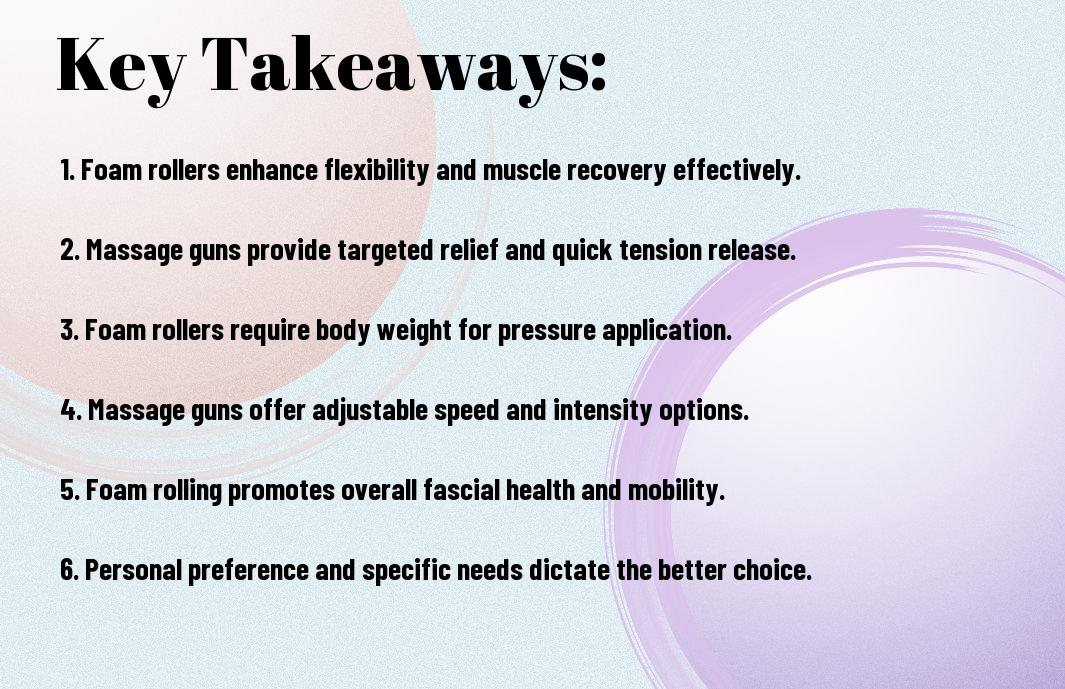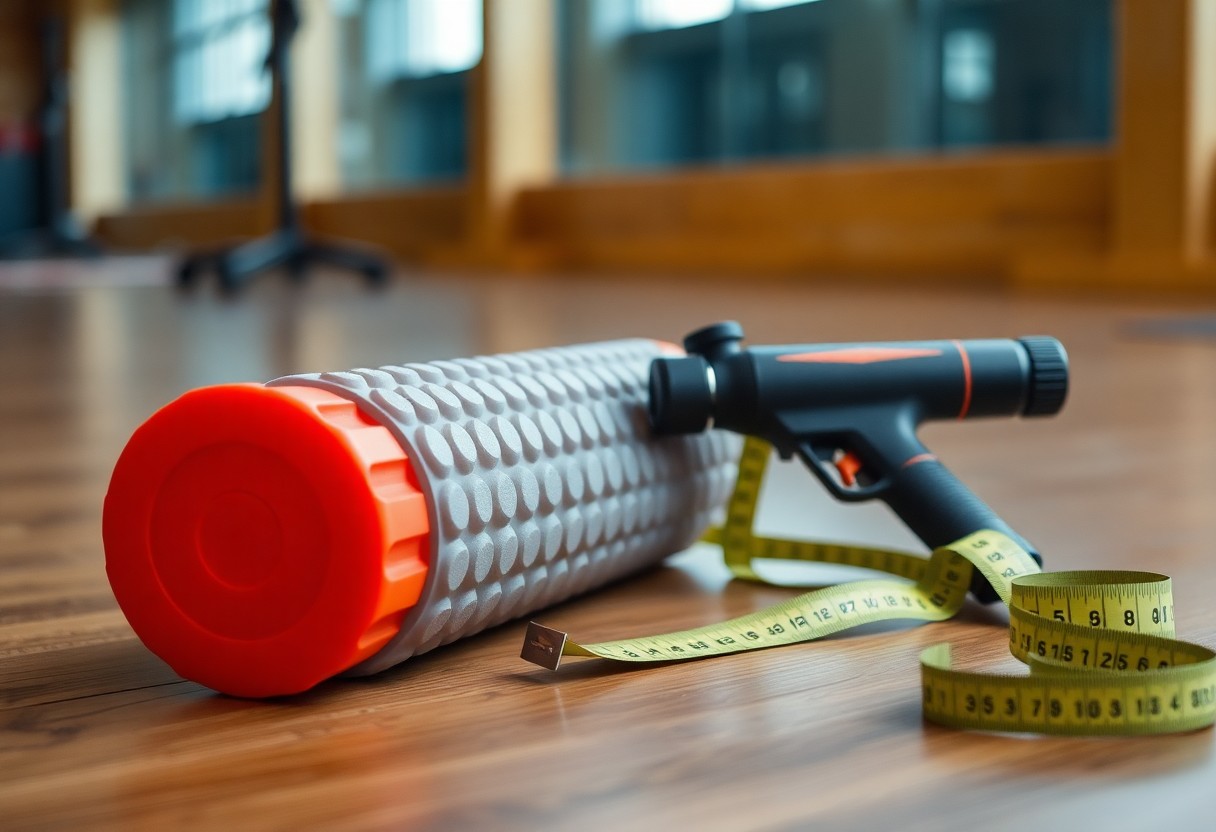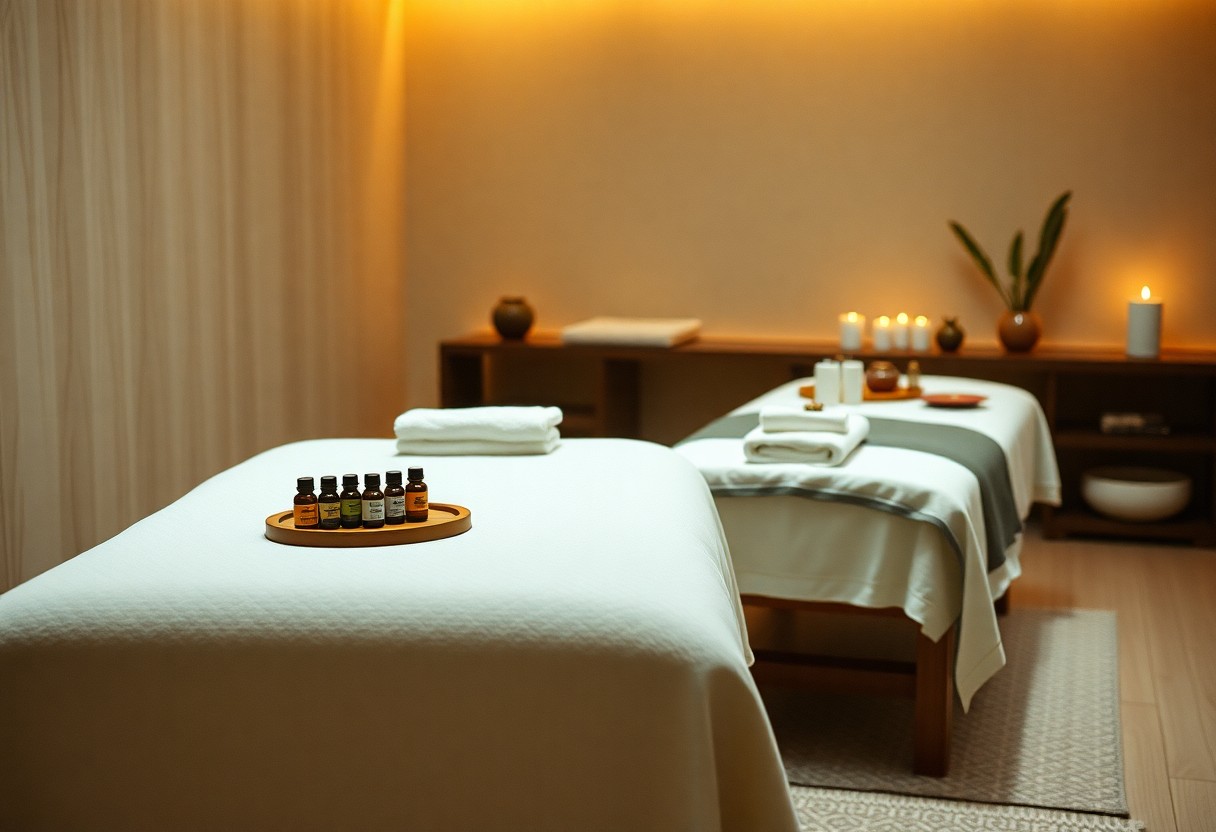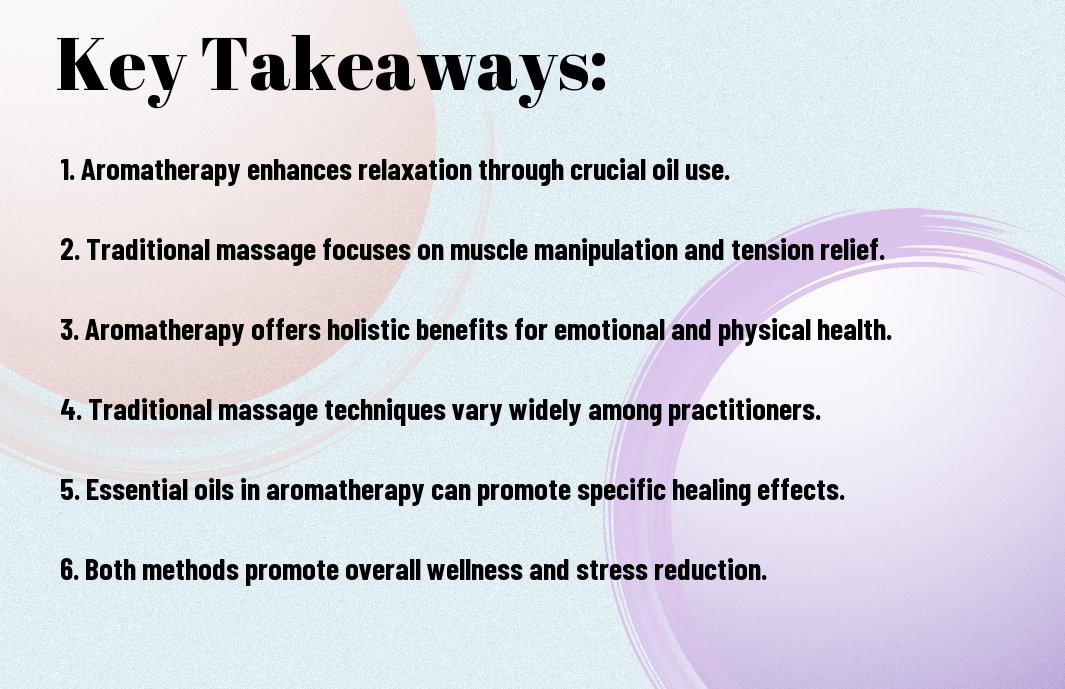Over the years, athletes and fitness enthusiasts have sought effective ways to relieve muscle tension and enhance recovery. If you’re considering incorporating self-myofascial release into your routine, you may be wondering whether foam rollers or massage guns will serve your needs better. In this post, we’ll explore the unique benefits and functionalities of each tool, helping you make an informed decision for your recovery and performance goals. By understanding their differences, you can choose the best option for your fitness journey.
Key Takeaways:
- Targeted Relief: Massage guns provide more focused treatment on specific muscle groups, making them ideal for targeting tight spots.
- Mobility and Flexibility: Foam rollers enhance overall mobility and flexibility by promoting broader muscle relaxation and recovery.
- Convenience and Portability: Massage guns are often more portable and user-friendly, while foam rollers are typically bulkier but effective for longer use.
Understanding Foam Rollers
Your journey to improved mobility and reduced muscle soreness can be significantly enhanced through the use of foam rollers. These cylindrical tools provide a form of self-myofascial release, targeting knots and tight areas in your muscles to promote recovery and enhance flexibility. By rolling specific muscle groups, you can alleviate tension and improve blood circulation, making foam rolling a valuable addition to your fitness routine.
Benefits of Foam Rolling
Understanding the benefits of foam rolling can transform your approach to recovery. Foam rolling helps reduce muscle soreness post-exercise, increases blood flow to the tissues, and improves your overall range of motion. Additionally, it can assist in preventing injuries by releasing muscle knots and maintaining optimal muscle function.
Common Techniques and Usage
Below are some common techniques and ways to effectively use foam rollers. You can target various muscle groups, such as your back, legs, and glutes, applying your body weight onto the foam roller to release tension. Transitioning slowly over the muscle and pausing on tight spots can maximize benefits and promote relaxation.
For instance, when rolling out your hamstrings, sit on the floor with the foam roller positioned under your thighs. Engage your core and use your arms to lift your body up and down, rolling over the foam roller. Experiment with different angles and positions to find the most effective areas of tightness, allowing for a comprehensive treatment to enhance recovery and performance.
Exploring Massage Guns
Some people find massage guns to be a game-changer for muscle recovery and relaxation. These portable devices use percussive therapy to deliver rapid bursts of pressure to sore muscles, helping alleviate tension and improve blood flow. With various attachments and speed settings, they can target specific muscle groups and are great for pre-workout warm-ups or post-workout recovery routines.
Advantages of Massage Guns
Beside providing instant relief from muscle soreness, massage guns offer convenience and versatility. You can easily incorporate them into your daily routine, using them at home, the gym, or even in the office. Their ability to pinpoint tight spots makes them a popular choice for athletes and fitness enthusiasts looking to enhance their recovery efforts.
How to Use a Massage Gun Effectively
Before you start using a massage gun, consider the areas you want to focus on and the desired depth of pressure. Lightly hold the device against your muscle for around 30 seconds, moving it slowly across the area. Adjust the speed and attachment based on comfort and the muscle group you are targeting.
Due to the varying intensity levels and attachments that massage guns offer, it’s necessary to customize your approach based on your body and needs. Always start with a lower speed setting to gauge comfort before gradually increasing the intensity. Aim to use the device for about 1-2 minutes on each muscle group, ensuring you stay mindful of any discomfort. Make sure to maintain a steady motion and avoid staying too long on a single spot, as this can lead to soreness rather than relief.
Comparing Effectiveness in Muscle Recovery
After reviewing the effectiveness of foam rollers and massage guns, you’ll find they cater to different muscle recovery needs. While foam rolling is great for slow, controlled stretching and larger muscle groups, massage guns provide targeted, rapid relief to specific areas. Here’s a comparative breakdown:
| Foam Rollers | Broad muscle coverage, enhances overall flexibility and circulation |
| Massage Guns | Targeted relief, quicker recovery for specific soreness |
Foam Rollers vs. Massage Guns: Evidence-Based Analysis
Foam rolling has been shown to improve muscle performance and decrease soreness after workouts. On the other hand, research indicates that massage guns can enhance blood flow and reduce delay in muscle onset soreness (DOMS) more effectively in a shorter time frame. Both tools have their merits, depending on your recovery needs.
User Experience and Preference
Recovery preferences can greatly influence your choice between foam rollers and massage guns. Personal comfort and how quickly you want to see results often guide users.
Massage guns provide a user-friendly experience, allowing you to adjust intensity levels and target specific muscle groups with ease. Many users appreciate the convenience of massage guns, enabling them to quickly self-treat soreness after workouts. Meanwhile, foam rollers require a bit more effort and coordination, which some may find less appealing. Ultimately, your preference may come down to how you like to incorporate recovery practices into your routine.
Safety and Considerations
Once again, when using foam rollers or massage guns, your safety should be a top priority. It’s important to listen to your body and avoid overexertion during your self-massage routine. Always consult a healthcare professional if you have any underlying health concerns or injuries prior to using these tools. This ensures that you use them effectively and safely, preventing any potential harm.
Risks Associated with Foam Rolling
Around foam rolling, there are risks such as bruising or exacerbating existing injuries if you apply too much pressure or target sensitive areas. If you’re new to this technique, start slowly and ensure you use proper form to minimize the likelihood of injury. Being cautious and conscious of your body’s reactions will enhance the foam rolling experience.
Risks Associated with Massage Guns
On the other hand, massage guns can also pose risks, particularly if used improperly. Misuse may lead to muscle soreness or even injury, especially if you direct the device on sensitive areas or bone structures. It’s wise to familiarize yourself with the correct usage and adjust settings based on your comfort level.
Indeed, understanding the risks associated with massage guns helps you to use them more effectively. Overusing or applying too much pressure without proper technique can lead to bruising, inflammation, or worsened pain in targeted muscles. Additionally, if you experience any sharp pain or discomfort while using a massage gun, it’s necessary to stop immediately and reassess your technique or consult a professional for guidance.
Cost Analysis
Not all recovery tools are created equal, especially when it comes to price. Where foam rollers and massage guns stand in terms of cost can influence your decision on which one to invest in for your recovery regimen. Let’s explore the price ranges of both to help you make an informed choice.
Price Range of Foam Rollers
Beside the varying designs, foam rollers generally range from $10 to $50. Basic foam rollers, made from standard materials, are often on the lower end of that spectrum, while higher-density and specialty options may command a slightly higher price. This gives you the flexibility to choose a roller based on your budget and needs.
Price Range of Massage Guns
An investment in massage guns can be more significant, with prices typically ranging from $50 to over $300. Entry-level models that provide basic features are more budget-friendly, while professional-grade guns with advanced settings and attachments can be considerably pricier, designed for frequent or intense use.
This price variance reflects the features and materials utilized in the construction of massage guns. Higher-priced options usually include multiple speed settings, long battery life, and a variety of attachments to target different muscle groups effectively. Evaluating your personal needs and how often you plan to use the device can help you decide if spending more is justified for enhanced performance.
Recommendations for Use
All athletes and fitness enthusiasts can benefit from incorporating both foam rollers and massage guns into their routine. Depending on your needs, these tools can complement each other effectively. For recovery, warm-up, and injury prevention, understanding when and how to use each device will enhance your performance and overall well-being.
When to Use Foam Rollers
Foam rollers are best utilized during your warm-up or cool-down sessions. Using a foam roller helps to release muscle tightness and enhance blood flow, making them an excellent choice for preparing your body for exercise or helping it recover afterward.
When to Opt for Massage Guns
With massage guns, the focus is on targeted muscle relief, making them ideal for use directly after workouts or when you experience specific tightness or soreness. Their ability to deliver fast, localized treatment can significantly improve recovery times.
And if you’re dealing with stubborn knots or deep-seated muscle tension, massage guns offer a powerful solution. You can easily maneuver them to precisely target specific muscle groups, ensuring you address problem areas efficiently. With adjustable intensity levels, you can customize your treatment to suit your preferences, whether you need a gentle massage or a deeper pressure for therapeutic relief.
Final Words
With this in mind, choosing between foam rollers and massage guns ultimately depends on your personal preferences and fitness goals. Foam rollers provide a more hands-on approach, allowing you to target specific muscle groups with varying pressure. In contrast, massage guns offer convenience and precision, making self-myofascial release quick and effective. Assess your routine, the areas you typically experience tension, and how much time you can dedicate to recovery. Both tools can enhance your performance and recovery, so find the one that fits seamlessly into your lifestyle.
FAQ
Q: What is the main difference between foam rollers and massage guns?
A: Foam rollers are cylindrical pieces of foam used for self-myofascial release, which helps relieve muscle tightness and improve flexibility by applying pressure to specific areas of the body. On the other hand, massage guns are handheld devices that use rapid pulsations to provide targeted muscle stimulation and soreness relief. While foam rollers require manual effort and can cover larger areas, massage guns offer precise treatment on specific muscle groups with adjustable speed settings.
Q: Which tool is more effective for muscle recovery?
A: The effectiveness of foam rollers versus massage guns for muscle recovery largely depends on personal preference and specific needs. Foam rollers allow for a broad approach to easing tension across larger muscle groups, making them ideal for overall body maintenance, while massage guns excel at targeting smaller, tight areas with their fast and intense vibrations. Many individuals find a combination of both tools to be beneficial for comprehensive recovery.
Q: Are foam rollers or massage guns easier to use?
A: Foam rollers are generally more straightforward in their use since they do not require batteries or special settings; you simply roll your body over them to apply pressure. However, they require some physical effort and balance, especially for beginners. Massage guns tend to be easier to direct toward specific muscle groups, but they do require proper handling to avoid overuse or injury. Ultimately, ease of use can vary from person to person based on skill and comfort level with each tool.
Q: Can either option cause injury if not used correctly?
A: Yes, both foam rollers and massage guns can lead to injury if not used properly. Overapplying pressure with a foam roller can result in bruising or strain on muscles. Similarly, using a massage gun at too high of a speed or on sensitive areas can cause discomfort or injury. It’s important to listen to your body, apply moderate pressure, and to gradually acclimate to either device to minimize the risk of injury.
Q: Which option is more portable for travel purposes?
A: Pertaining to portability, massage guns typically have the advantage due to their compact size and the convenience of being handheld. Specifically designed for travel, many massage guns come with travel cases and are battery-operated. Foam rollers, while they can be lightweight, are bulkier, especially the larger sizes. For those frequently on the go, a massage gun is often the more convenient choice for muscle relief during travel.





